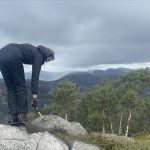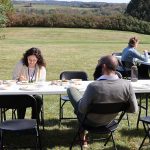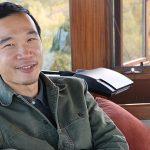Brittany Paige Edelmann
- June 19, 2022
- Brittany Paige Edelmann
Janyiah, a ninth-grade student at Gary Comer College Prep, started “falling in love with science” three years ago in the South Side school’s proactive STEM
- December 9, 2021
- Brittany Paige Edelmann
Nearly 20 years ago, then Ph.D. student Gina Moseley walked into a bar in Bristol to meet fellow members of the University of Bristol Spelæological
- December 5, 2021
- Brittany Paige Edelmann
Oxford University Ph.D. student Frankie Buckingham collected the 30, 1-meter-long cylindrical tubes of soil she needed for climate research in August 2018 on a British
Categories
Latest Articles
December 30, 2024
December 30, 2024
Contact Information
Abigail Foerstner, Managing Editor and Medill Associate Professor




